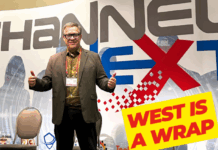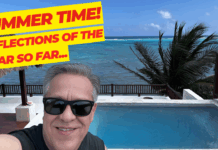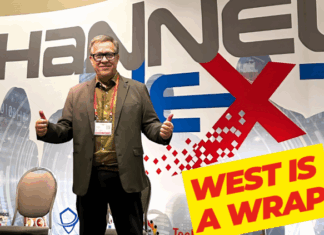A global, nomadic approach to personal and professional life is a key factor to the success of millionaires around the world, according to a new research report released today by RBC Wealth Management and The Economist Intelligence Unit (EIU). Quality of life and family needs were the top considerations for millionaires who left their birth country in search of success, rated as important by 88 per cent and 79 per cent respectively, while business interests were a key factor for two-thirds (67 per cent).
The report, Wealth Through the Prism of Culture and Mobility, investigates the investment, wealth transfer and charitable-giving behaviours of individuals who live, work, or spend more than half their time outside their country of birth and have investable assets of at least US$1 million. Focusing on this group of internationally-mobile wealthy individuals (IMWIs), the report highlights how the global paths of the wealthy influence their key wealth decisions.
“As globalized economies converge, high net worth individuals have increasingly international footprints, with personal and professional interests in multiple geographies,” said George Lewis, Group Head, RBC Wealth Management & Insurance. “Our experience working with high net worth clients around the world shows that their success is often strongly influenced by a global perspective about building, protecting and ultimately transferring wealth to future generations.”
A Global Approach To Income And Investing
According to the survey, most internationally-mobile wealthy individuals (60 per cent) generate the majority of their income from the country they now call home. In turn, almost half (48 per cent) invest the majority of their income back into their country of residence, while nearly a third (32 per cent) invest primarily in their country of origin. IMWIs take a similarly global approach when it comes to what they invest in, with global equities favoured by over a third (36 per cent), compared to just a quarter (25 per cent) of millionaires who have stayed in their home country.
Real Estate The Top Asset Class for Mobile Millionaires
Real estate leads the list of preferred asset classes for the internationally-mobile wealthy, with over half (53 per cent) having it as a high or very high proportion of their portfolio. A propensity to invest very heavily in real estate is apparent among those living in the Asia-Pacific region, with almost a third (31 per cent) doing so compared to just seven per cent of their counterparts in North America and 10 per cent of those in Western Europe. Mobile millionaires are also more likely to have significant investments in precious metals compared to their home-based wealthy peers (21 per cent versus 13 per cent).
Wealth Transfer And Charitable Giving: Which Home Is Where The Heart Is?
The most common approach to wealth transfer is to leave enough to their family so they are comfortable but still have to work for a living (33 per cent). However, unique differences exist based on where respondents were born. Those from Asia-Pacific are the most likely to leave all their assets to their families, with 41 per cent planning to do so, compared to just over a quarter (27 per cent) of IMWIs from other regions. Meanwhile, North Americans are the most likely to leave assets to charity, with 29 per cent planning significant donations compared to just 11 per cent of IMWIs from other markets. Despite these varied plans, over a third of respondents do not have a will (37 per cent) and admit to not fully understanding the tax regimes their assets are subject to (34 per cent), factors which may impact what their families and charitable causes will inherit.
North American Residents Give Where They Live
While birth country influences charitable giving as part of an estate plan, country of residence affects current levels of donations among mobile millionaires, likely due to levels of government social spending and charitable tax benefits. Respondents in North America prefer to give where they live, with three-quarters (76 per cent) giving to local causes, while those in the Asia-Pacific region are more focused on their birth countries, with 48 per cent giving to causes back at home, 38 per cent to causes where they reside and 13 per cent to causes in other countries. Children’s charities receive 27 per cent of total donations from respondents followed by health, education and poverty reduction causes, which attract 13, 12 and 11 per cent of donations respectively.
Internationally-mobile wealthy individuals: Fast facts
They are generally self-made, having earned their wealth as professionals
(29 per cent), entrepreneurs (17 per cent) or as executives of public organizations (12 per cent). Less than a third (30 per cent) grew up with high net worth parents.
Younger millionaires (aged 40 and under) generated wealth through more diverse means, with only 17 per cent earning wealth as professionals, compared to 26 per cent of those aged 41-to-50 group and 41 per cent of those older than 50.
Those born in Asia-Pacific generated wealth at a younger age, with almost half (46 per cent) aged 40 and under, compared to 19 per cent of those from other regions.
Residents of Singapore and UK are the most likely to have three or more personal residences, with 29 per cent and 28 per cent calling at least three places home respectively, compared with 18 per cent of those in Canada and nine per cent of those in the U.S.
These are some of the findings from Wealth Through The Prism of Culture and Mobility, a research study conducted by The Economist Intelligence Unit through June to October 2012. The EIU conducted an online survey of 558 high-net-worth individuals, using a stratified sample that included 300 respondents who live or work outside their country of birth or spend more than half of their time outside their home country. Survey findings from the latter group of IMWIs forms the basis for most of this report, while the 258 non-mobile respondents provide benchmarks for comparison. The EIU also conducted a number of in-depth interviews with select survey respondents in person or by phone. The margin of error, with a sample size of 558 and a confidence level of 95 per cent, is 4.15.













